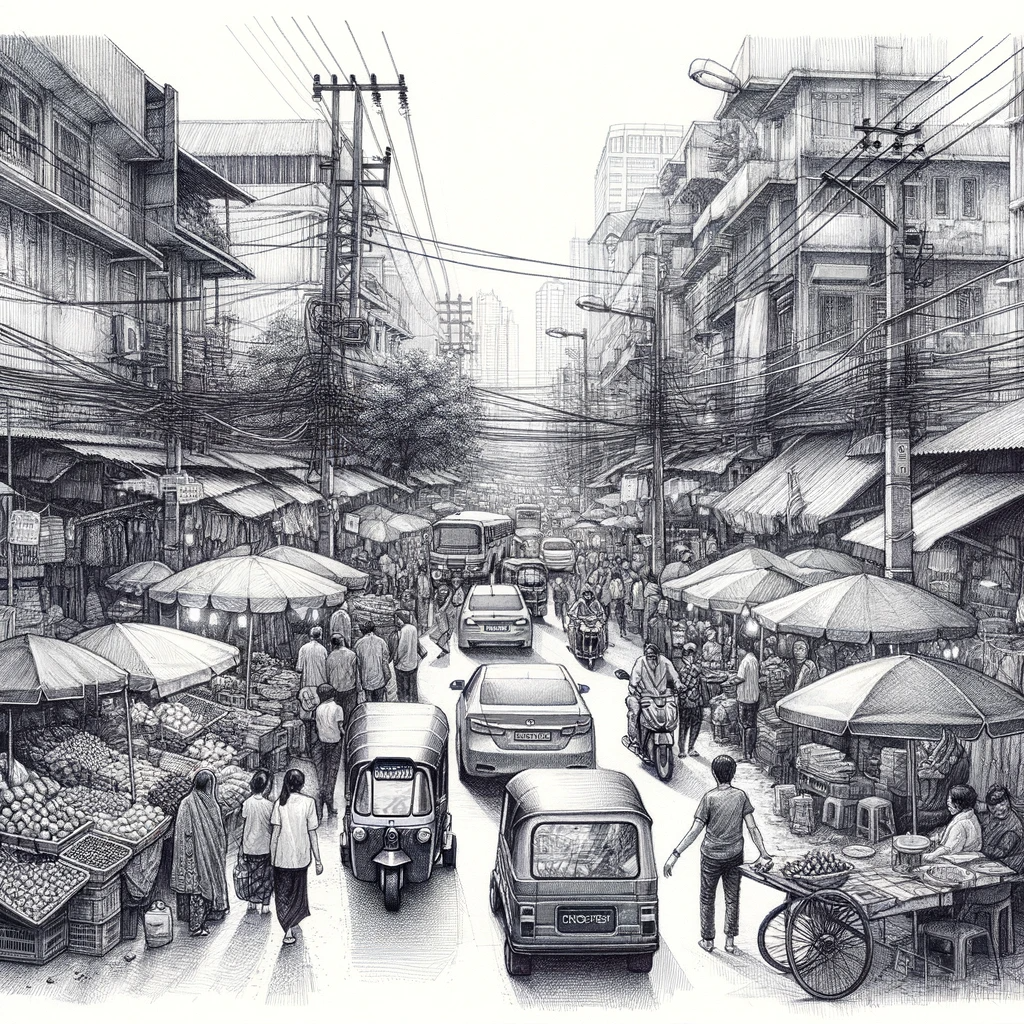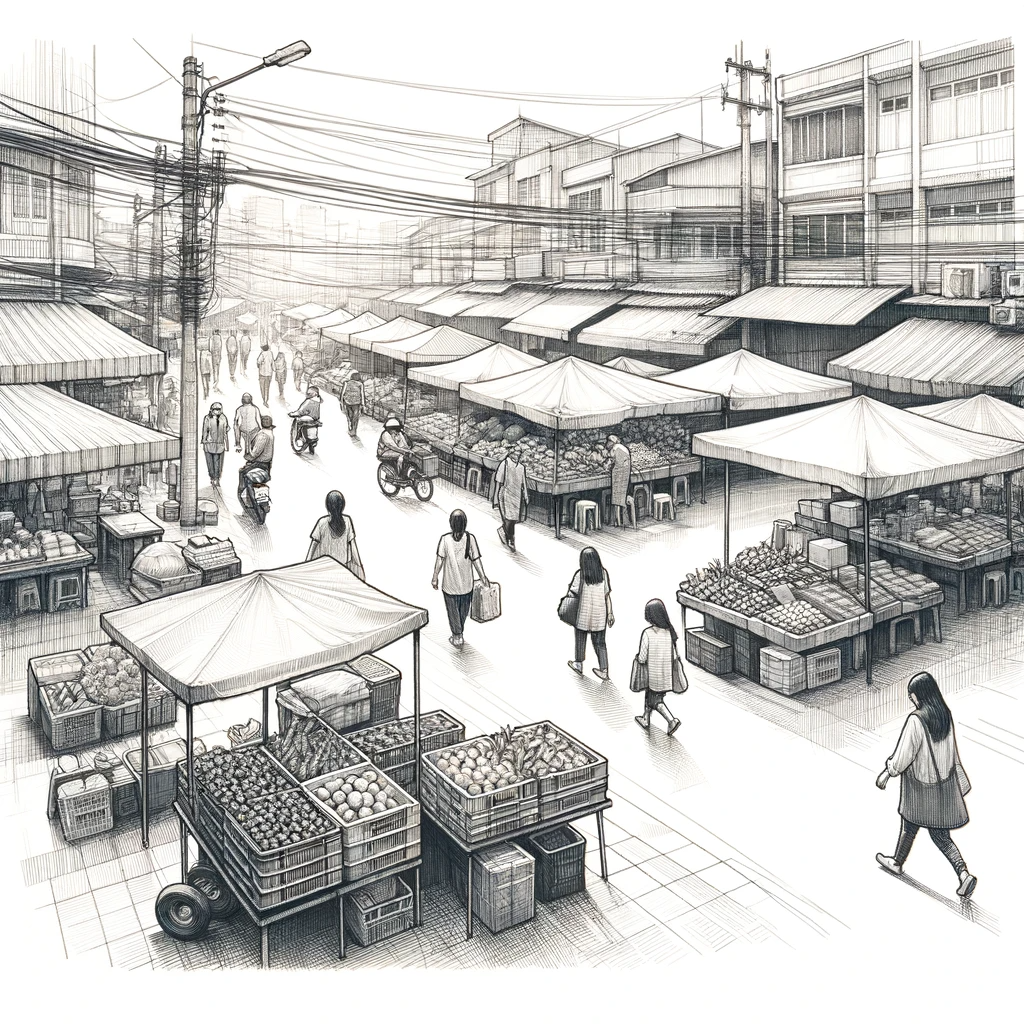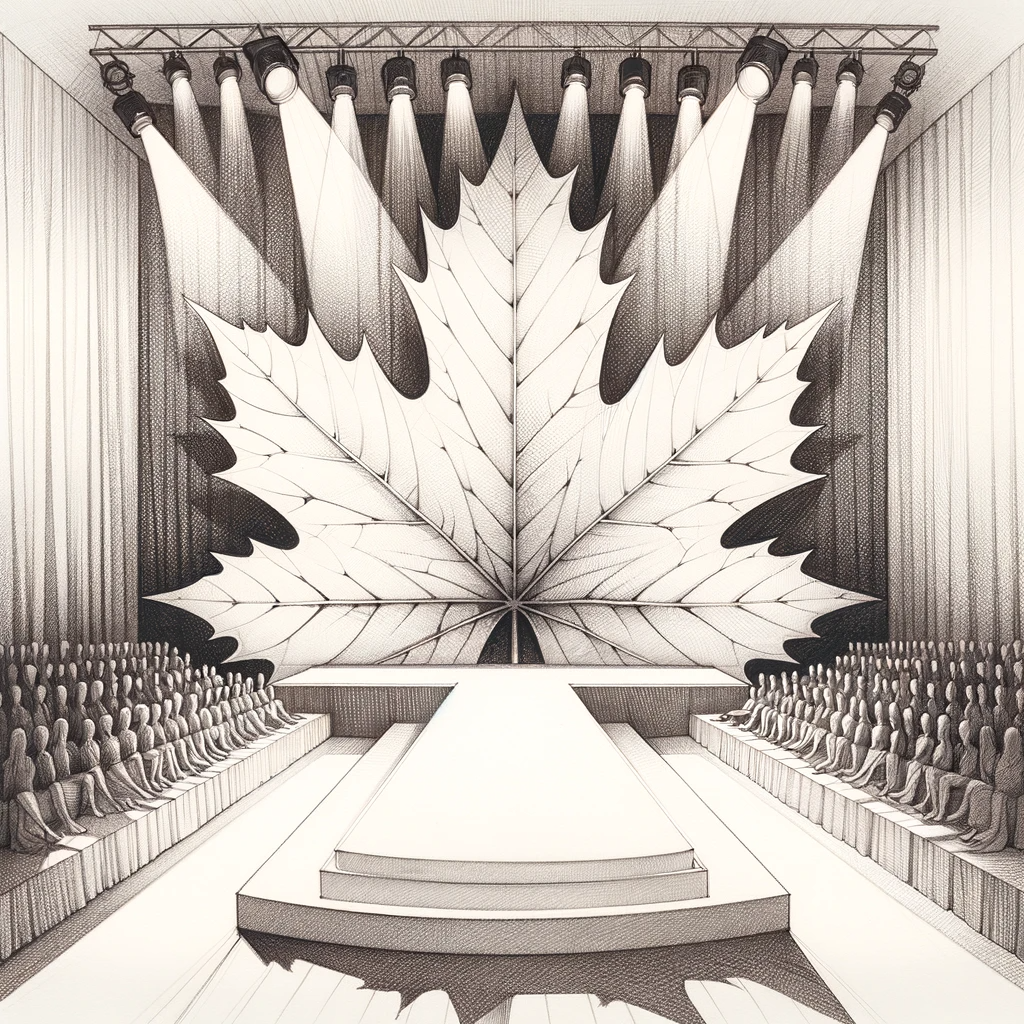Creative Ability Test (CAT)
nift entrance
Looking for Sample Questions and Answers for NIFT Creative Ability Test (CAT)? You are at the right place! The NIFT CAT generally focuses on testing the creativity, observation power, innovation in development of a concept, and design ability of the candidate. With MyEntrance, you can now learn the Conceptual and Technical aspects of CAT exam within minutes. Take a roam around to enhance your design and innovation skills with NIFT creative ability test sample questions and answers.
Creative Ability Test (CAT) Sample Question 1
Sketch a scene at a busy urban street market. Focus on capturing the hustle and bustle.
Two Point Perspective, Depth of Field, Cross Hatching
One Point Perspective, Depth of Field, Cross Hatching
Two Point Perspective, Depth of Field, Cross Hatching
The illustrations of the busy urban street market skillfully employ several design principles and techniques. Firstly, perspective drawing is a key element, creating a sense of depth and realism. The street recedes into the background, while buildings and vehicles like autorickshaws and cars are proportionately scaled to enhance the three-dimensional feel. Cross-hatching strokes are used effectively to add texture and shading, giving a tactile quality to various surfaces like the street, stalls, and vehicles. This technique also helps in distinguishing different elements and adds a dynamic contrast to the scene.
The principles of color theories are implied through the use of shading, suggesting how light and shadow interact in a bustling urban environment. Even in the absence of actual color, the varied intensities of pencil strokes hint at a diverse color palette. Observational power is evident in the realistic depiction of the market’s hustle and bustle, capturing the essence of a crowded, lively urban setting.
Creative Ability Test (CAT) Sample Question 2
Draw a futuristic piece of wearable technology and describe its function.
Depth of Field, Perspective,
Textures, Detailing
Cross Hatching, Textures,
Detailing, Symmetry & Balance
Depth of Field, Detailing,
Textures, Symmetry
The overall design is simple and innovative, suggesting the incorporation of advanced technology in a wearable format. It’s drawn with an attention to detail that makes it look both realistic and feasible for production. The perspective used in the drawing gives a three-dimensional feel to the band, emphasizing its fit and ergonomics on the human body. In summary, the illustration captures a balance between futuristic technology and practical wearability, presented in a style that is both artistic and technically adept.
- Perspective and Proportion: Answer Option 3, band, is drawn with a basic understanding of perspective, giving it a three-dimensional appearance on the two-dimensional paper. This perspective is crucial in showing how the band would realistically wrap around a human biceps. The proportions are maintained consistently throughout the drawing, with the screen and meter appropriately scaled in relation to the band’s overall size.
- Cross-Hatching and Shading: The use of cross-hatching strokes is evident in the 2nd illustration, a technique often employed in pencil drawings to suggest texture and depth. This is particularly noticeable in different areas of the band, where varying densities and directions of cross-hatching create the illusion of different materials. Shading is used effectively to provide a sense of volume and curvature, crucial for conveying the band’s ergonomic design.
- Texture Representation: The drawing showcases different textures that imply various materials. The smoothness of the screen contrasts (figure 1) with the more textured parts of the band, suggesting a combination of hard and soft components. This textural differentiation is a key aspect of technical drawing, as it helps in conveying material properties visually.
- Detailing and Clarity: While the drawing is detailed enough to convey the concept and functionality of the band, it remains clear and uncluttered. This clarity is important in technical drawings to ensure that the design’s essential elements are easily understood.
- Simplicity and Feasibility: The drawing balances detail with simplicity, making it a feasible project for a 12th-grade student. The design doesn’t delve into overly complex technical aspects, such as intricate mechanical components, which keeps it within a manageable scope for a high school level drawing.
- Application of Basic Design Principles: The illustration reflects an understanding of basic design principles like balance, symmetry, and emphasis. The screen and meter are positioned in a way that creates a visually balanced and aesthetically pleasing composition.
In summary, the illustration demonstrates a solid grasp of fundamental technical drawing techniques, making it both educational and practical for students learning NIFT Creative Ability Test (CAT).
Creative Ability Test (CAT) Sample Question 3
Create a logo for an eco-friendly fashion brand.
Symmetry, Texture,
Organic Forms
Depth of Field, Symmetry,
Texture
Symmetry, Texture,
Organic and Geometric Forms
This logo, designed for an eco-friendly fashion brand, captures the essence of environmental consciousness and sustainable fashion. At the heart of the design is a stylized representation of the Hanger with Leaves, rendered with natural textures and cross-hatching strokes, symbolizing the brand’s commitment to the planet.
The design employs subtle perspective techniques, adding depth and dimension to the logo. This artistic approach not only enhances the aesthetic appeal but also aligns with the principles of technical drawing and gestalt theories. The overall simplicity of the design, paired with its creative and meaningful elements, makes it an ideal representation of an eco-friendly fashion brand, conveying a message of sustainability and style. This logo exemplifies creativity, observation power, and an understanding of environmental responsibility in fashion.
Creative Ability Test (CAT) Sample Question 4
Create a concept sketch for a fashion show stage inspired from nature.
Perspective, Symmetry, Texture,
Line, Space, Organic Forms
Perspective, Texture, Contrast,
Line, Space, Organic Forms
Colors, Symmetry, Texture,
Perspective, Organic Forms
Concept Description of Illustration
This illustration presents a concept sketch for a fashion show stage designed with an organic theme. The central idea revolves around harmoniously blending elements of nature with the elegance of a fashion runway. The stage is crafted to mimic a serene forest path, using polished wood to create a natural, earthy ambiance. The runway is adorned with leafy vines and an array of floral decorations, bringing a vibrant and lively touch to the setting.
The backdrop of the stage is an artistic interpretation of organic shapes, drawing inspiration from the curves and forms of leaves and petals. This creates a sense of immersion, as if the audience and models are enveloped in a tranquil natural environment. The organic theme is further enhanced by the use of natural lighting and subtle color palettes, intending to create a space that feels both luxurious and grounded in nature.
Technical Drawing Aspects
From a technical perspective, the illustration employs basic principles of perspective drawing to establish depth and dimensionality. The runway is depicted with a vanishing point, guiding the viewer’s eye along the catwalk and giving a sense of depth. The use of cross-hatching techniques in various densities allows for the portrayal of different textures, such as the wooden surface of the runway and the foliage of the plants.
The shading around the backdrop and the audience area is subtly executed, ensuring that the focus remains on the runway while still providing a sense of space and volume. The layout of the chairs and the positioning of the runway lights are strategically planned to enhance the viewer’s experience, ensuring visibility and aesthetic appeal. The overall simplicity of the drawing, with clear lines and minimalistic detailing, adheres to the skill required for a candidate appearing for NIFT Creative Ability Test (CAT).
Creative Ability Test (CAT) Sample Question 5
Illustrate an abstract concept like “time” or “freedom” in a drawing.
Perspective, Texture,
Cross hatching, Light Shading
Depth of Field, Symmetry,
Texture
Asymmetry, Texture,
Organic and Geometric Forms
The illustrations aim to visually represent the abstract concepts of “time and freedom” in a way that is understandable and achievable by a candidate appearing for NIFT Creative Ability Test (CAT). Let’s break down both the conceptual and technical aspects of these drawings:
Concept Description of Illustration
- Time: This is symbolized by the partially unwound clock spring. Clocks are universally recognized symbols of time, and the unwound spring suggests the passage of time and its continuous, unbound nature.
- Freedom: Represented by the bird. Birds are often used as metaphors for freedom due to their ability to fly and traverse boundaries effortlessly. The bird in this drawing is poised as if about to take flight, emphasizing the concept of liberation and limitless potential.
Concept Description of Illustration
- Pencil Drawing: The choice of medium (pencil) is appropriate here as it allows for ease of use and correction, which is vital for students who are still developing their artistic skills.
- Cross-hatching Strokes: This technique is used for shading. It involves creating a series of overlapping parallel lines. It’s a fundamental skill that adds depth and texture to the drawing without requiring advanced techniques.
- Simple Lines and Minimal Details: The drawing is not overly complex, making it achievable within a limited time frame. The simplicity also ensures that the focus remains on conveying the abstract concepts rather than on intricate artistic details.
- Perspective and Composition: Basic perspective is used to give a sense of space and dimension. The placement of the clock spring and the bird creates a visual flow that guides the viewer’s eye through the concepts of time and freedom.
- Light Shading: This is used in the background to highlight the main objects (the spring and the bird) without overwhelming the viewer or detracting from the main subjects.
These elements combine to create a visually appealing and conceptually rich illustration that remains within the skill level and time constraints of NIFT CAT. Good Luck Everyone!
Aiming for Top Rank in NIFT General Ability Test?
Boost your chances of achieving an outstanding rank in the GAT by engaging with our comprehensive series of meticulously designed mock tests, tailored to mirror the actual exam experience.














